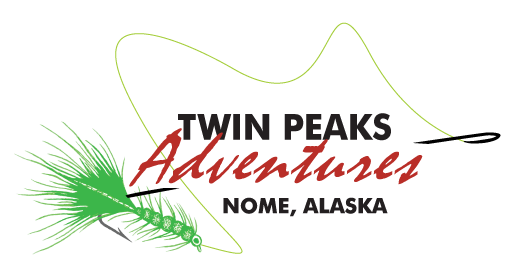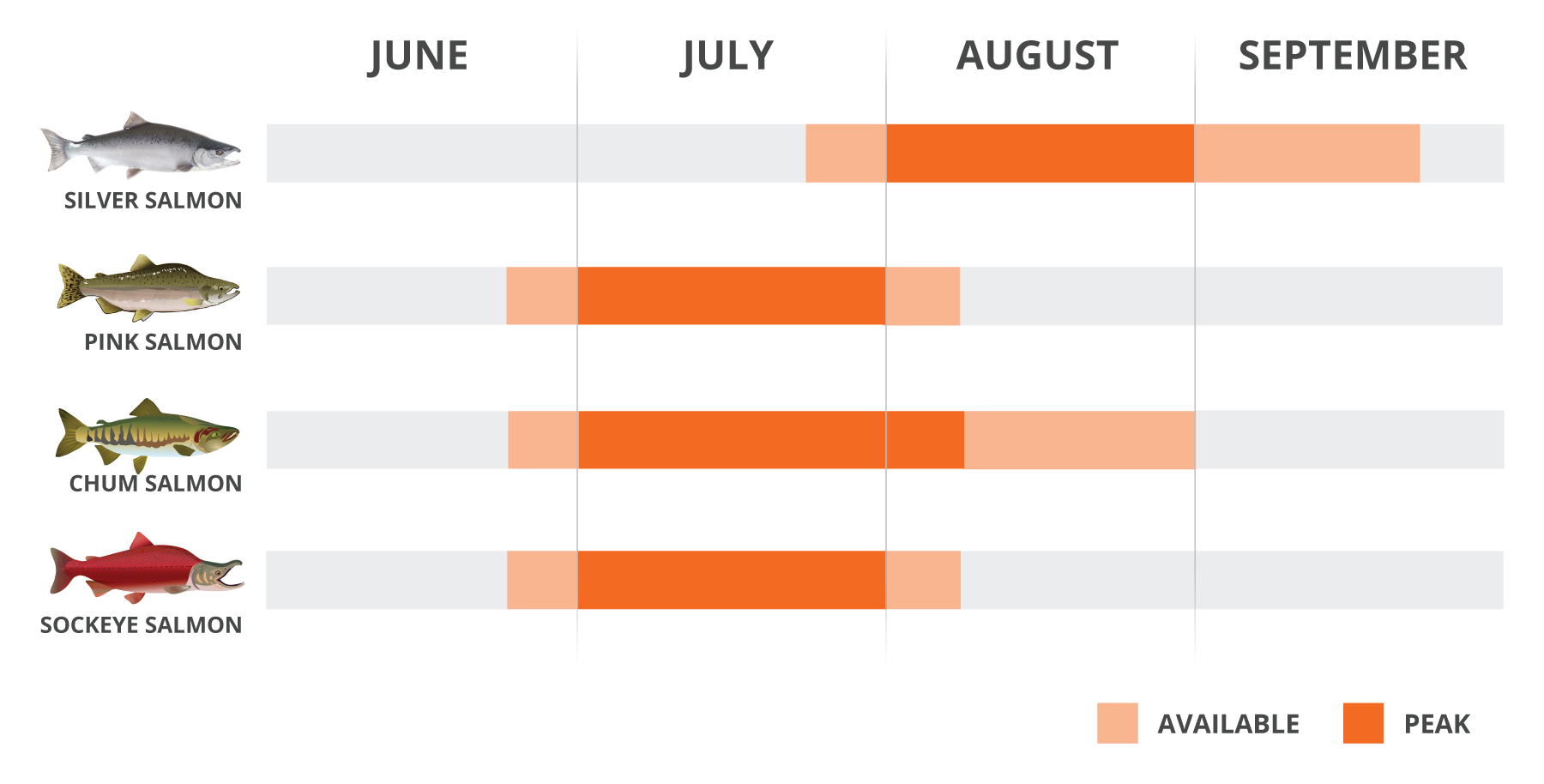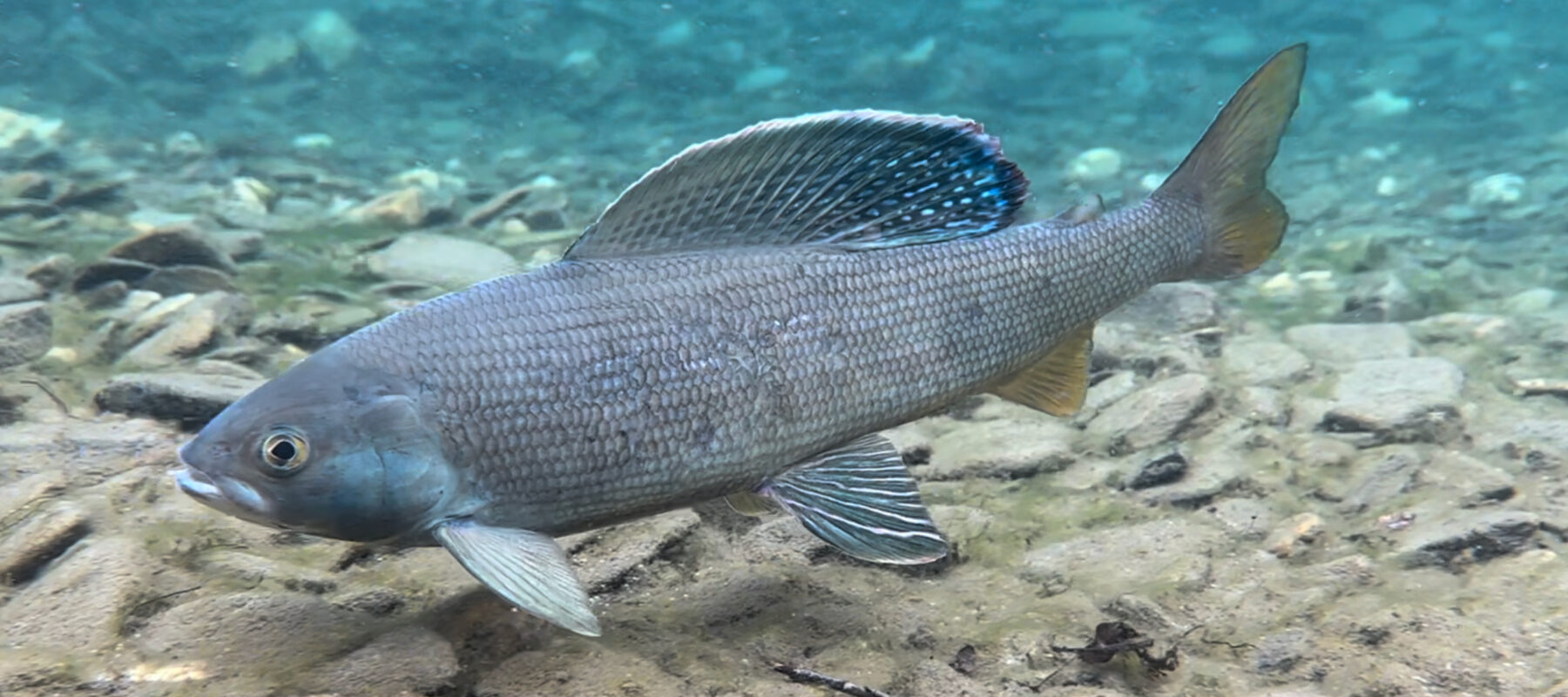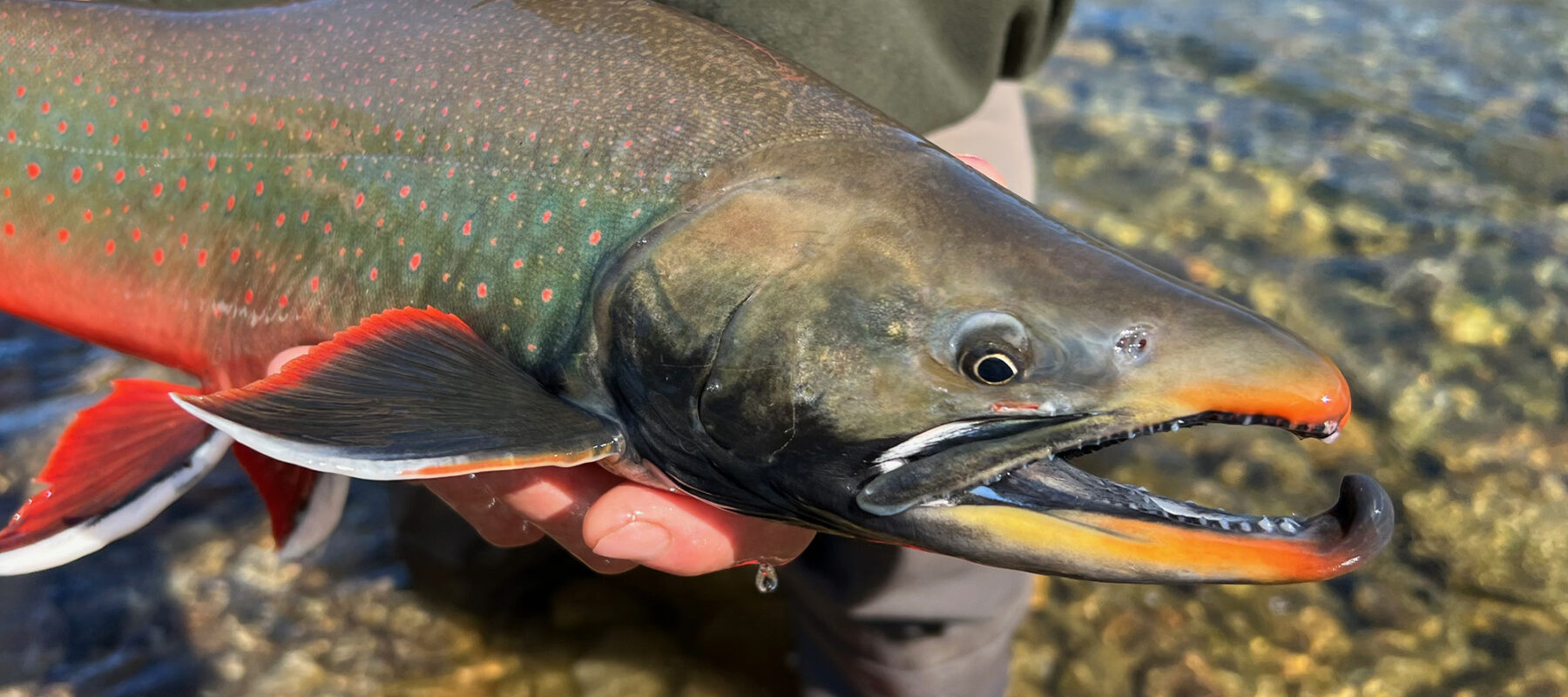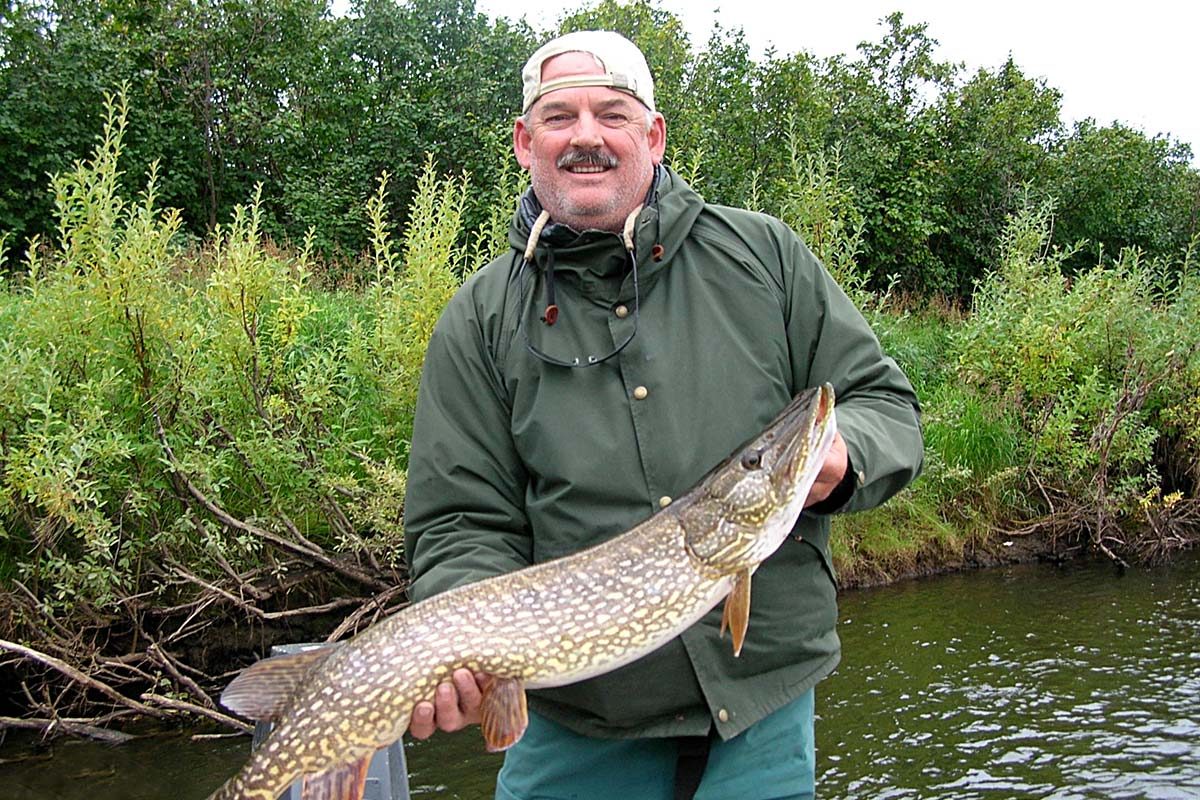Probably the best sport fishing for salmon is for the Coho, or Silver Salmon. Coho rear in freshwater for one or two years before smolting and traveling to the sea. They remain at sea for about 14 months and begin to enter our rivers during late July. The run peaks in mid-August and continues into September. Silvers are known for their acrobatic leaps and their long runs. Many Seward Peninsula Rivers receive good returns of Coho Salmon.
Caught early in the run, you will get a beautiful bright silvery fish. As they get closer to spawning, the fish will darken to a bronze or purplish color, and then finally turn all red. But don’t think you’ve got the upper hand; a red-colored Coho can still put up a mean fight.
Fly-fish for these spectacular fish with an 8 weight fly rod. Coho are very aggressive and will usually attack most bright attractor patterns. Tie simple streamers with a combination of colors including red/white, orange/white, and pink/yellow. A little bit of silver flash or sparkle will add to the appeal.

